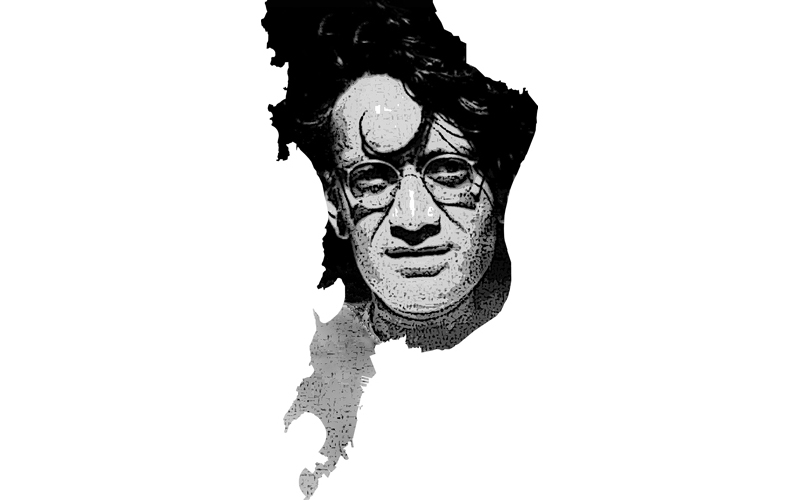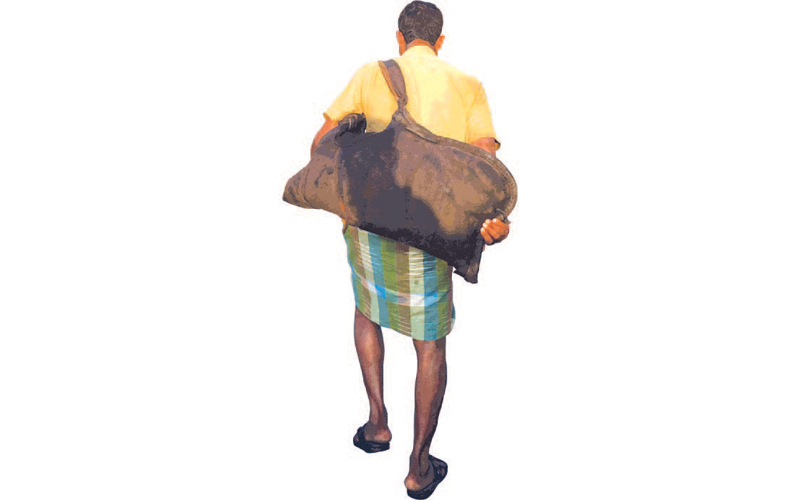Art and Culture
Manto and the City Called 'Bombay' | Amrita Kaur Slatch & Mohammed Esa Shaikh
LA 56 |
|
| Saadat Hasan Manto, born in the pre-Independence era, is known for his writings on the dark psyche of the society and its people, something that no one dared to talk about at that time in history. His contributions to literature are extensive: twenty-four collections of bold short stories, a novel, five series of radio plays, three collections of essays, two collections of personal sketches. In all of these, the city he wrote most about was Bombay. Deeply impacted by the spaces in the city, he was stirred to write about the brutal and pragmatic truths of its people and society apart from reconnoitering the intangible aspect of the city. To put forth an example, the prostitution area of 'Pila House' or 'Randi bazaar' was an area he was most fascinated with. It was his bold inkling to document the human behaviour in such areas, as well as reveal the macabre and animalistic nature that stands out in the brevity of human life.
|
|
 |
|
The article is an attempt to reflect on the idea of Manto's Bombay through giving an insight into the book Bombay Stories and also through some photographs that capture the essence of the city today. The literature curiously discovers the impact of those spaces in the city that played an important role in inspiring him to write these magnificently critical, sensitive and politically strong short stories. The photographs will explore the spatial context of Mumbai, then Bombay, where Manto lived and spent his writing days. The photographs will also document the change in the landscape of the city to emphasize the social and intangible fiction that is presented in the nuances of the neighbourhood, its people and its lost heritage. The idea is to weave some connection from the fact-befuddling book to the actual existing pictographs which will bring attention to Manto's objective of telling a story of this city. A realistic documentation of the city where Manto lived, wrote and struggled.
Bombay Stories
Bombay Stories-as the name suggests-is a collection of stories set in Bombay. Apart from being stories, they are a pragmatic collection of the author's experiences through the un-ventured territories of the city's landscape. Manto, Urdu's most celebrated author and also the narrator of the stories, arrived in Bombay in the year 1936 and stayed in Baithi Chawls of Arab Gully. He was just twenty-four years old, and was here to work as an editor for a weekly film newspaper. This was the time when Manto fell in love with the city of dreams and even after having moved to Pakistan, post-partition, continued to write about the city he called his 'other home'. His longings for Bombay city was never-ending.
Apart from imparting the above knowledge to the reader, the introduction of the book which is written with great deftness by Matt Reeck, explains to the reader why Manto mostly wrote about prostitutes, pimps, lowlifes, writers, intellectuals, aspiring film actors, thugs, conman and crooks. He personally advises and recommends that the introduction be read again after finishing the book since much of Bombay's social and economic scenarios are explained by relating them to some selected stories.
|
|
|
 |
|
|

|
|
|
|
| CURRENT ISSUE: LA-61 |
|
|
|
|
environment, ecology and biodiversity |
RESCUING THE URBAN POLLINATORS
MADHURA KHADE
WETLANDS AT WORK
UNDERSTANDING WETLANDS
With inputs from Dr. C. R. Babu
CONSTRUCTED WETLAND AT RAJOKRI, NEW DELHI
[Delhi Jal Board]
Ankit Srivastava
CONSTRUCTED WETLAND AT NEELA HAUZ, NEW DELHI
Landscape and Environment Planning Department,
Delhi Development Authority
CONSTRUCTED WETLAND AT HAUZ KHAS LAKE, NEW DELHI
Tarun Nanda, Evolve Engineering
RESTORATION AND REJUVENATION OF RIVER YAMUNA FLOODPLAINS, NEW DELHI
Landscape and Environment Planning Department,
Delhi Development Authority
REIMAGINING THE CITY
YAMUNA RIVER PROJECT:NEW DELHI URBAN ECOLOGY
[Authors Inaki Alday and Pankaj Vir Gupta]
Review by Geeta Wahi Dua
REJUVENATION AND RESTORATION OF URBAN PONDS, GURUGRAM
Future Institute
SPURRING ECONOMIC REVIVAL THROUGH ECOLOGICAL RESTORATION,
NANHU, CHINA
Uma Sekar
heritage, urban design, landscape architecture |
FROM MY HOUSE TO YOUR HOUSE
In conversation with Miki Desai
CITY MAPS: MAPPING NATURE AND ENVIRONMENT
Review by Rabindra J. Vasavada
A SENSE OF SPACE
Anuraag Chowfla
IN CONVERSATION WITH RANJIT SABIKHI
DEMOCRACY, PARTICIPATION AND CONSULTATION
In conversation with Bimal Patel
city and culture |
OUR CITIES CAN FIGHT COVID-19 PROACTIVELY
Mriganka Saxena and Puneet Khanna
LOCALIZING FUTURES
Geeta Wahi Dua
BOURGEOIS ENVIRONMENTALISM AND THE VULNERABILITY OF THE POOR
UNCIVIL CITY: ECOLOGY, EQUITY AND THE COMMONS IN DELHI [Author: Amita Baviskar]
Review by Nikhil Dhar
STREETSCAPES IN PUNE
CREATING A HEALTHY AND WALKABLE NEIGHBORHOOD: AUNDH NEIGHBORHOOD UPGRADATION | PUNE
Prasanna Desai Architects
ABOUT RETAIL, TREES AND YOUNG VIBES:
JANGLI MAHARAJ ROAD | PUNE
Oasis Designs Inc.
EMERGENCE OF THE EPHEMERAL
Bijoy Ramachandran
seeing the unseen |
ART FOR ALL
St+Art India Foundation
|
|